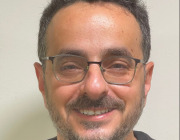Date Published:
junAbstract:
Importance: To date, little is known about the extent to which occupational therapy practitioners have adopted the core insights of disability studies. Objective: To examine the degree to which occupational therapy practitioners endorse the medical model of disability versus the social model of disability in theory and in practice. Design: Cross-sectional study. Setting: Physical rehabilitation facilities, ranging from hospital to community settings. Participants: One hundred two Israeli occupational therapy practitioners. Outcomes and Measures: The Orientation toward Disability Scale, constructed for this study, has two dimensions that distinguish between the medical and social models of disability: locus of intervention (the person or environment) and client involvement (extent to which the practitioner fosters the client’s autonomy in the rehabilitation process). Each dimension addresses both theoretical and practical endorsements. Results: Greater support for the social model of disability was mostly evident in the client involvement dimension, whereas support for the medical model of disability was mostly evident in the locus of intervention dimension. Over both dimensions, the medical model of disability was significantly more endorsed in practice than in theory. Work setting and prior exposure to the social model of disability were found to affect practitioners’ disability orientation. Conclusions and Relevance: Occupational therapy practitioners working in physical rehabilitation are still relatively far from fully adopting the critical insights of the social model of disability. This finding is especially relevant when their actual practice, rather than their theoretical views, is considered and when rehabilitation takes place in out-of-home settings. What This Article Adds: This study offers unique insight into the disability orientation of occupational therapy practitioners, showing a need for more training programs to expose students to the social model of disability. These programs should use critical discussions of the challenges that this model presents to the profession and barriers to implementing it in practice.Notes:
Publisher Copyright: © 2021 American Occupational Therapy Association, Inc. All rights reserved.
